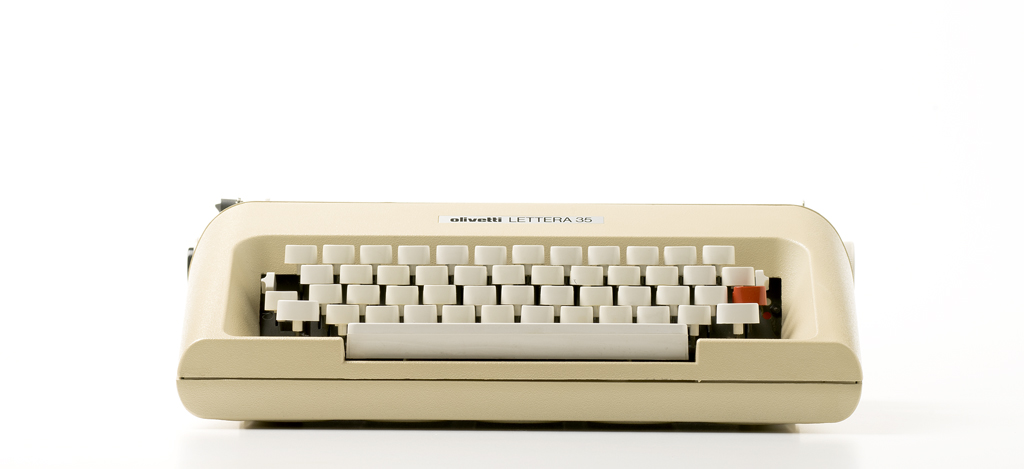Lettera 35 typewriter
Olivetti successfully fostered long term consultant relationships with some of Italy’s finest industrial designers including Mario Bellini (1935 -), who retained the position of chief design consultant from 1963 to 1991. Bellini’s designs for Olivetti continued the company’s tradition of exploring bold new forms for existing products. His design technique was to first build three dimensional models. He would then engage with and modify the prototype prior to any engineering drawings being executed. During this design process Bellini was able to refine the shape and visual impact, the product’s narrative (an unfolding discovery of its abilities and use) and haptic or tactile properties.
With the accelerated uptake of rapid prototyping in the 1980s (where a CAD rendering could be machined almost instantly), this approach became popular with other manufacturers and designers.
The casing of the Lettera 35 is a study in carefully controlled form through plane, line and curve which echoes earlier treatments to Olivetti typewriter casings (such as the Ico), thus unifying its design within the larger body of Olivetti typewriters. Yet it clearly demonstrates Bellini’s new found interpretation of existing forms.
The blunted Concorde nose mirrors the simple treatment of form at the typewriter’s rear. The die cast aluminium casing joints are not flush leaving powerful visual lines along the side that emphasise the dropped nose. A slight fall in the type basket cover also exaggerates this form. A cheeky single red key presents a highlight while the eye-like platen roller knob offers a zoomorphic character to the profile.



